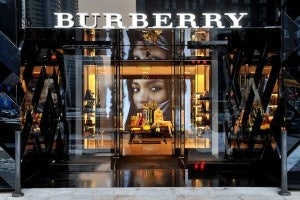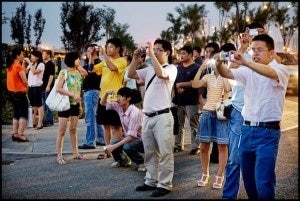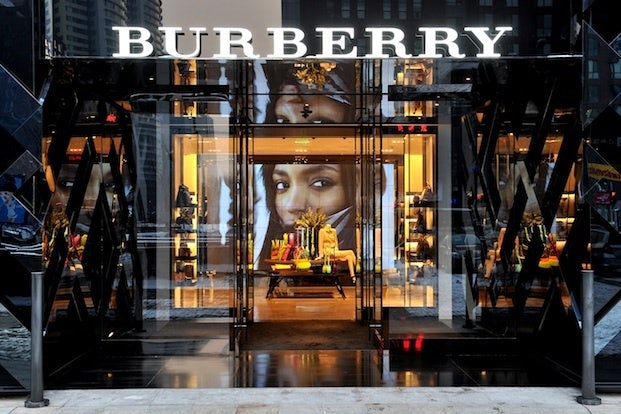Burberry’s Slowdown Be More Complex Than Many Expect#

Over the past several months, the compounding financial woes of leading British luxury house
Burberry#
has become the go-to sob story in business and luxury media alike. Experiencing a global sales slowdown, resulting in disappointing full-year profits, Burberry shares have fallen as much as 20 percent this week, the steepest drop since the company’s 2002 IPO. As Retail Week reported, “The slowdown is understood to be affecting all regions and occurring throughout the luxury sector, and signals a sudden drop in Chinese consumer spending in particular.”
Elaborating on this point and again pointing at Asia, Angus Campbell, head of market analysis at London Capital Group, told Retail Week that the retailer “has gorged itself on a booming middle class in the Far East, but this news today is yet another indication that Chinese consumption, upon which the company is so heavily reliant, is stalling.”
While industry watchers are concerned about Burberry’s sad tidings, it would be a gross generalization to say that Burberry’s performance is representative of the entire Chinese luxury market or true for all blockbuster luxury brands. While a general slump has hit brands like Burberry and Hugo Boss over the course of this year, others such as Hermès and L’Oreal, and luxury groups LVMH Moët Hennessy and PPR have shown double-digit growth that defied observer fears of a sharp China drop-off.
Slower macroeconomic growth this year in China has been pointed out by some observers as leading directly to less torrid luxury consumption this year. However, one important point that bears repeating is that -- while this slowdown may indeed affect the luxury market -- its effect is far from wholesale, hitting some brands harder than others. Highly visible mega-brands with readily identifiable logos, designs or signature patterns are more exposed to taking a heavier beating within mainland China, particularly this fall and winter.
So what's pushing this?
For one thing, in light of the recent Chinese government clampdown on government luxury splurges using public funds (and the upcoming leadership transition in Beijing), many government officials and businesspeople have grown wary of overly conspicuous consumption and gift-giving. As such, we're seeing signs that luxury consumers may spend less this year on items like flashy watches and jewelry, yet -- according to a recent poll by Ruder Finn and polling company Ipsos China -- more than 40 percent of mainland Chinese respondents said they planned to spend more this year on wine, shoes and cosmetics. (Items typically purchased for personal use or as gifts for family members.)
Second, as the well-seasoned Chinese shopper increasingly refines their retail palette, steering away from ubiquitously known “bling,” less visible brands -- such as the purposefully understated
Maison Martin Margiela#
, which opened a mammoth location in Beijing last October -- will reap more benefits than entrenched luxury powerhouses. As the New York Times reported recently as a global trend piece, the switch to more exclusive, quasi-anonymous brands is “a natural evolution of luxury consumption patterns seen in other markets — where new buyers will always want to line their closets with the biggest names, but older buyers are getting choosier.”

Chiming in, Elan Shou, managing director and vice president of Ruder Finn Asia, told the Times, “What we are seeing is a change in spending patterns, not a drop in the desire for luxury items. We are seeing an evolution occurring among luxury consumers from outward needs, i.e., displaying signs of wealth, to inward needs, i.e. buying luxury items to reward oneself and enjoy the experience.”
There are other factors speeding up the evolution of Chinese consumers as well, including overseas travel and the rise of luxury e-commerce. Now, regardless of location, Chinese shoppers can get their hands on the crème de la crème of fashion’s top edits via domestic online retailers such as Shangpin and international players like The Outnet.
Be that as it may, there still is an upside to the luxury slowdown. While some major high-end brands may be experiencing a waking nightmare at the moment, Burberry for one remains optimistic, keeping their eyes on long-term growth prospects. As Jaana Jatyri, chief executive of Trendstop.com recently told the Huffington Post, "This is not the beginning of the end for Burberry, it's just a shot across the bows." Moreover, a slowdown now may be what the Chinese luxury market needs to ease the pains of an overzealous growth spurt.
Additionally, changing tides in consumer behavior could have promising things in store for smaller, growing boutique brands and rising e-commerce sites, which now -- finally -- may have a shot to tap into a more complex market with greater niche opportunities.
